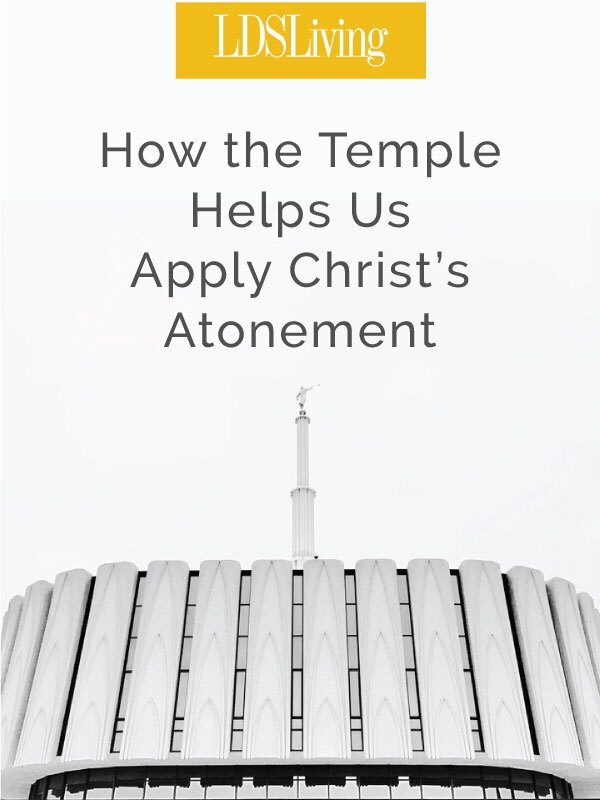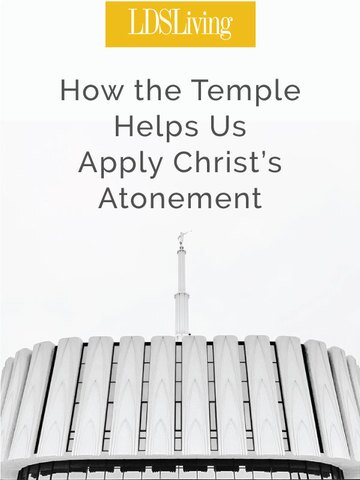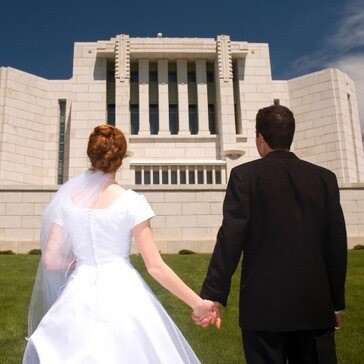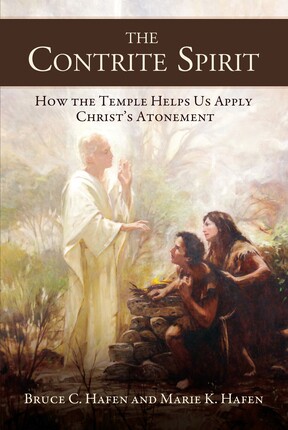
The following excerpt originally appeared on LDS Living in October 2015.
The role of sacrifice in the temple illustrates how the temple ordinances embody and teach higher Melchizedek-level principles. These ordinances reflect Christ’s sacrifice, and they teach us symbolically how our own sacrifices might seek to echo His. As our Primary children sing, “He knows I will follow him, Give all my life to him.”
Performing Ordinances in Similitude of Christ’s Sacrifice
When they left the Garden of Eden, Adam and Eve built an altar and offered animal sacrifices. Then an angel came to ask Adam why he was offering sacrifices. He answered, “I know not, save the Lord commanded me.” The angel told him, “This thing is a similitude of the Only Begotten” (Moses 5:7). The unblemished lambs they sacrificed pointed them toward the Father’s future sacrifice of His Son. The angel then taught Adam and Eve that Christ’s sacrifice and the plan of redemption gave meaning and purpose to their entire earthly experience, from their fall from Eden until their mortal death and beyond.
Many of us go to the temple today the way Adam and Eve first offered sacrifices—simply because we are commanded, without knowing why. Simple obedience is certainly better than not performing the ordinances at all. But the Lord who sent that angel must have wanted Adam and Eve to know why they performed the ordinances—and I believe He wants us to know why we do.
Are today’s temple ordinances also “a similitude of the Only Begotten”? Think of how the temple’s altars are—like the altar of Adam and Eve—altars of prayer, sacrifice, and covenant. Think of the elements of sacrifice in all the covenants of the endowment. Since Christ completed His atoning mission, we no longer offer animal sacrifice, but He does invite us to sacrifice in the same way that He taught the Nephites: “Ye shall offer for a sacrifice unto me a broken heart and a contrite spirit” (3 Nephi 9:20).
Animal sacrifice was symbolic of the Father’s sacrifice of the Son. But the sacrifice of a broken heart and a contrite spirit symbolizes and emulates the Son’s sacrifice of Himself. With great reverence, Elder James E. Talmage wrote that Jesus literally “died of a broken heart.” To receive the blessings of His blessed offering, Christ now asks us to offer ourselves—our own broken hearts—as a personal sacrifice. Though it be as meager as a widow’s mite, our offering is indeed “a similitude” of His sacrificial offering to and for us. As Elder Neal A. Maxwell said, “Real, personal sacrifice never was placing an animal on the altar. Instead, it is a willingness to put the animal in us upon the altar and letting it be consumed!”
We promise to sacrifice ourselves in this personal way throughout the temple ordinances. Then we leave the temple and reenter our daily lives, where we try to live the covenants we made at the altars of sacrifice. The Savior’s strengthening and perfecting blessings, along with the priesthood power of the temple, can then interact with our moment-to-moment striving, helping us press forward to become more fully consecrated followers of Jesus. As the sixth Lecture on Faith teaches, “A religion that does not require the sacrifice of all things never has power sufficient to power the faith necessary unto life and salvation.”
Each time we make or renew sacrificial covenants, we resolve to live a more sacrificial life—living outside ourselves in love more fully each day, in similitude of His Great Sacrifice. In the temple, He gives us added light and strength to keep that resolve when we leave the temple. As we then live that way, our discoveries make us better able to comprehend His light. Then, with each new step, our experience takes us to slightly higher ground, from where we can take the next step toward receiving added light in an ever-expanding process: “He that receiveth light, and continueth in God, receiveth more light; and that light growth brighter and brighter until the perfect day” (D&C 50:24).
We are learning the mysteries of God, but the process isn’t that mysterious. It is like going to a music teacher for a lesson and then diligently practicing the next assignment until the next lesson. In each temple tutorial, the Master Teacher discerns and assigns specifically what needs our attention, and we witness physically our willingness to pay attention. The depth of our devotion to Him and the growing rigor of our discipline increase our comprehension of His sacrifice because we are becoming more aware of the price of our sacrifices and the fruit they produce. Gradually we will realize the promise of being “filled with light” and comprehending “all things,” including the mysteries and knowledge of God (D&C 88:67). Therefore, “sanctify yourselves, that your minds become single to God” (D&C 88:68).
Making Sacrifices and Living in Similitude—the Marriage Sealing
To illustrate more specifically how this process works, consider the sealing ordinance. Not long ago, I was about to seal a young couple in the St. George Temple. I invited them to the altar, and as the groom took the bride by the hand, I realized that they were about to place upon the altar of sacrifice their own broken hearts and contrite spirits—an offering of themselves to each other and to God in emulation of Christ’s sacrifice for them. And for what purpose? So that through a lifetime of sacrificing for each other—that is, trying to live as He did—they might become ever more as He is.
By seeking to live that way every day, they would each come closer to God, which would also bring them closer to each other. Through their increasing closeness to the Lord, their own energy and discipline would also draw upon the strengthening and perfecting powers He offers them through their Atonement-based covenant relationship with Him as His son and daughter. This way of living the covenants of the sealing ordinance would then sanctify not only their marriage but also their hearts, even their lives.
The more our sacrifices help us find Christ in the temple, the more we will find Him in our lives—and that process will transform us over time, preparing us to live one day in the exalted company of those seen in vision by President Joseph F. Smith: “And there were gathered together in one place an innumerable company of the spirits of the just, who had been faithful in the testimony of Jesus while they lived in mortality; And who had offered sacrifice in the similitude of the great sacrifice of the Son of God, and had suffered tribulation in their Redeemer’s name” (D&C 138:12-13; emphasis added).
As this exalted language suggests, those who seek the life of mature discipleship at the Melchizedek Priesthood level are likely to find that the higher principles and covenants of sacrifice are often linked to such related higher principles as suffering, meekness, consecration, and sanctification.
In a sense, the sealing ordinance also invites us into the fellowship of Christ’s suffering, as our marriage covenants may at times ask us to suffer—to be afflicted in—one another’s afflictions. The children born of that sealing may also bring us into this fellowship, as we may at times endure real anguish in bringing them here, rearing them, and suffering with them through their dark valleys. This sacrificial living of our temple covenants can “bring to us a certain special suffering,” and thus a special joy “that comes with deep discipleship.”
Lead image via iStock.
For more helpful insights into the connection between the Atonement and the temple, check out The Contrite Spirit: How the Temple Helps Us Apply Christ's Atonement.




